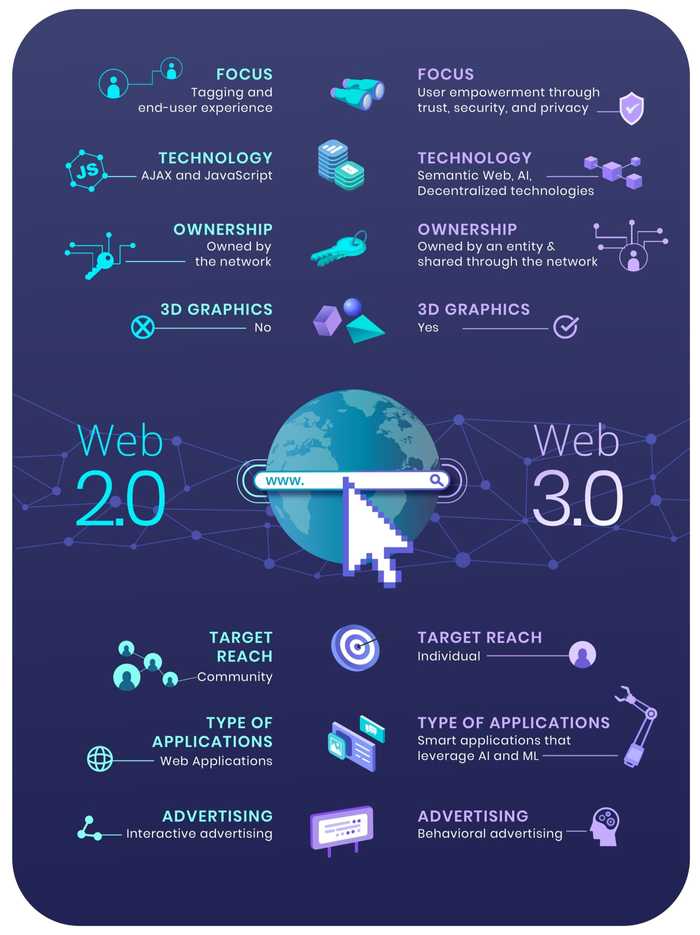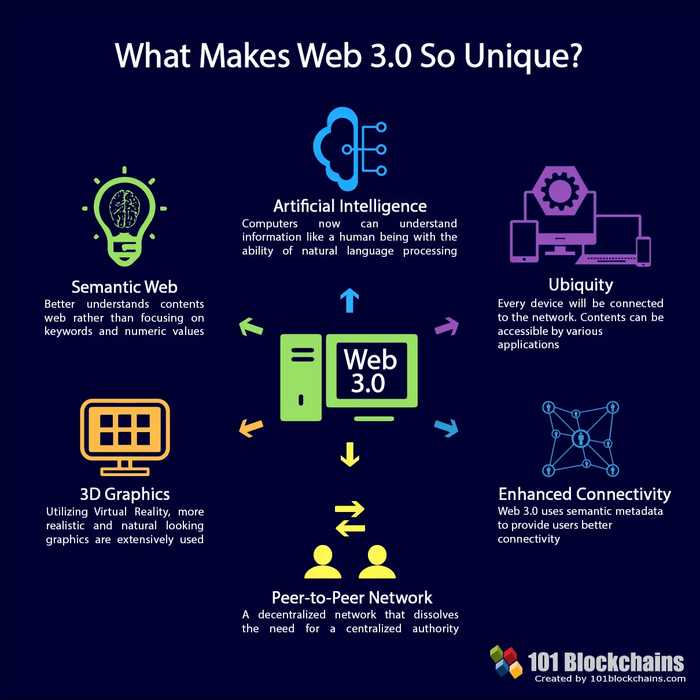The Internet is a vast network that connects computers all over the world. People can share information and communicate from anywhere with an Internet connection through the Internet. The World Wide Web (WWW), commonly known as the Web, was originally a hypertext document management system accessed over the Internet. It has since evolved into the world's dominant software platform.
Web 2.0 and Web 3.0 refer to a continuous iteration of the web within the comparison of original Web 1.0, which was carried out in the 1990s by Tim Berners-Lee. The current representation of the internet face is used by Web 2.0, but Web 3.0 progress as a next phase.
Web 1.0
Three fundamentals were created in early 1990 by Tim Berners-Lee.
1. HTML: Hypertext markup language is the editorial/formatting language of the web.
2. URI or URL: Uniform Resource Identifier or Locator, a unique address used to identify each resource on the web.
3. HTTP: HyperText Transfer Protocol, which allows for the retrieval of linked resources from across the web.
Within the same year(1990), Netscape introduced the new browser Netscape Navigator to make the source delighted new users. The majority of users' prominent popularity was real-time news retrieval by email. Lately, more advanced resources have become attractive as an interactive way of using banks and tradings via current platforms.
Web 2.0
The era of social media, stay connected, and user-generated content took place past 15-20 years. It becomes most required for their users as a connectivity point where 1 billion people can connect streams via the source, allowing every user to create their content and share.
Predominantly, Web 2.0 key elements here were access to mobile devices, social networks, as well as the near-ubiquity of powerful mobile devices like iPhones and Android-powered devices. This developed new applications for some powerful companies such as APPLE, Microsoft, and Airbnb and grew their revenues, including individuals' opportunities to make their earnings.
Web 3.0
Web3, often known as Web 3.0, is a concept for a new version of the World Wide Web that combines blockchain-based decentralization.
It's a catch-all word for various concepts aimed at cutting out the big middlemen on the internet. Navigating the web in this new era no longer requires signing up for Facebook, Google, or Twitter.
People in a Web3 world control their data and use a single anonymous account to go from social media to email to shopping, generating a public record of all of their activities on the blockchain.
Users can engage in the governance and management of the networks directly, rather than merely using free tech platforms in exchange for our data.
This means that people can become participants and stockholders, not simply customers or things.
Tokens or cryptocurrencies are the names given to these shares in Web 3, and they reflect ownership of decentralized networks known as blockchains. You can have a say in the network if you own enough of these tokens. For example, governance token holders can use their funds to vote on the future of a decentralized lending system.
What can Web 3.0 Bring to the Table?
Women, men, machines, and corporations will be able to trade value, information, and collaborate with worldwide counterparties they don't know or explicitly trust without the use of an intermediary thanks to Web 3.0.
The most significant change permitted by Web3.0 is reducing the level of trust necessary for global coordination. This represents a shift toward automatically trusting all network constituents rather than expressly relying on each member and/or seeking to obtain trust extrinsically.
1. This change will open up a whole new world of previously unimaginable companies and corporate models, from global co-operatives to decentralized autonomous organizations and self-sovereign data marketplaces.
2. Blockchain technology can eliminate trust provider third parties, and value can be returned directly to consumers and suppliers in a network, making societies more efficient.
3. Organizations can be naturally more robust to change through a new mesh of more adaptive peer-to-peer communication and governance ties between members.
4. More data can be shared by humans, businesses, and machines with greater privacy and security assurances.
5. We can own our data and digital footprints using established data scarcity and tokenized digital assets(NFTs).
Bottom Line
Analogically, the use of such resources may appear to be as Web 1.0 black/white tv, Web 2.0 coloured / 3d where Web 3.0 evolved to Metaverse.
Every year, it becomes more dominant and reliable for most businesses where the transition from Web 2.0 into Web 3.0 is inevitable and required.
Here is an example where a renowned company such as Facebook altered their name to Metaverse would well be maintained by Web 3.0, which is still on the high end.
The transition from Web 2.0 to Web 3.0 could shift gear for other companies to immerse new user activities and connectivity.



